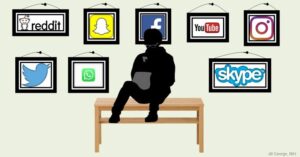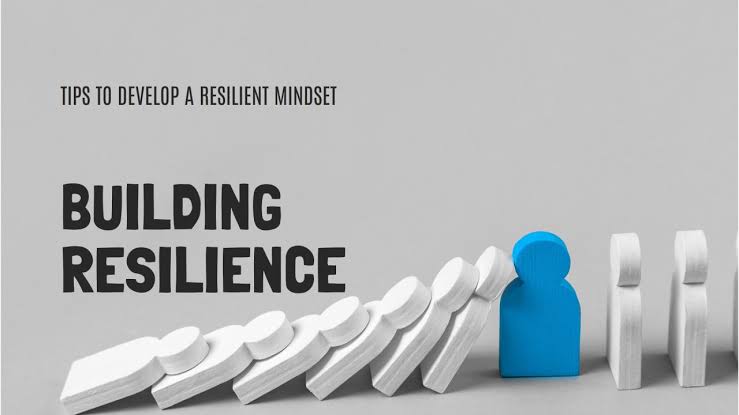Social Isolation and Loneliness: The advent of technology has drastically transformed the way individuals communicate, socialize, and engage with the world around them. While many proponents argue that technology fosters connectivity and enhances relationships, a growing body of evidence suggests that it can also contribute to social isolation and loneliness.
This article delves into the complex relationship between technology and social well-being, examining the implications of digital communication, social media, online gaming, and virtual realities on human interactions.
Understanding Social Isolation and Loneliness
Defining Social Isolation
Social isolation refers to the objective lack of social interactions and relationships. Individuals experiencing social isolation often find themselves physically alone and without regular contact with others.
Defining Loneliness
Loneliness is a subjective experience characterized by feelings of emptiness and disconnection, even in the presence of others. It is possible to feel lonely in a crowded room, highlighting its emotional nature.
The Health Implications of Isolation and Loneliness
Both phenomena can have detrimental effects on mental and physical health, leading to anxiety, depression, and various chronic illnesses. Understanding their impacts is crucial for addressing these issues effectively.
The Role of Technology in Communication
Evolution of Communication Methods
Historically, face-to-face interactions formed the cornerstone of human relationships. However, with the rise of the internet and mobile devices, communication has shifted towards digital platforms. Text messaging, emails, and social media allow individuals to connect instantly, regardless of geographical barriers.
Quality vs. Quantity of Interactions
While these technologies facilitate communication, they can also diminish the quality of interactions. Digital communication often lacks the non-verbal cues present in face-to-face conversations, such as tone of voice, body language, and facial expressions. This can lead to misunderstandings and a sense of disconnect.
Superficial Relationships
The convenience of texting and messaging can foster superficial relationships, where individuals may have numerous online acquaintances but lack deep, meaningful connections. As a result, despite having many “friends” online, individuals can still experience profound feelings of loneliness.
Social Media and Its Paradoxical Effects – Social Isolation and Loneliness
Benefits of Social Media
Social media platforms have become central to how people connect and share their lives. They offer opportunities to maintain relationships and reconnect with old friends, providing a sense of community and belonging.
The Dark Side of Social Media
However, social media also has a darker side. The curated nature of online profiles often leads to comparison and feelings of inadequacy. Users are bombarded with images of others’ seemingly perfect lives, which can exacerbate feelings of loneliness and isolation.
The Impact of Social Comparison
This phenomenon, known as “social comparison,” can trigger anxiety and low self-esteem. Studies have shown that individuals who spend significant time on social media often report higher levels of loneliness, particularly when they engage in passive consumption—scrolling through feeds without interacting.
Addictive Nature of Social Media
Additionally, the addictive nature of social media can lead to decreased face-to-face interactions. Individuals may prioritize online engagement over in-person connections, resulting in fewer real-life social experiences. This shift can further entrench feelings of isolation, as the quality of relationships suffers in favor of quantity.
Online Gaming and Virtual Interactions – Social Isolation and Loneliness
Community in Gaming
Another technological advancement that has reshaped social dynamics is online gaming. Multiplayer games allow individuals to interact with others in virtual environments, fostering a sense of community among players. Gamers can form friendships, collaborate on missions, and engage in shared experiences, often leading to meaningful connections.
The Isolating Effects of Gaming
However, the immersive nature of gaming can also contribute to social isolation. Many gamers may prefer the virtual world to real-life interactions, leading to a withdrawal from family and friends. The time spent gaming can interfere with social obligations and responsibilities, resulting in a lack of face-to-face interactions that are crucial for emotional well-being.
Depth of Online Relationships
While online gaming can provide social interactions, these relationships may lack depth. Players often bond over shared interests and objectives, but these connections may not translate into meaningful friendships outside the gaming context. The reliance on virtual interactions can leave individuals feeling isolated when not engaged in gameplay.
The Rise of Virtual Reality and Augmented Reality
Immersive Social Experiences
Emerging technologies like virtual reality (VR) and augmented reality (AR) present new avenues for social interaction. These technologies create immersive experiences that can simulate face-to-face interactions. VR platforms can host virtual meetups, concerts, and social gatherings, offering a unique space for individuals to connect.
Challenges of Virtual Interactions
While these technologies can enhance social engagement and provide opportunities for connection, they also pose challenges. The distinction between the virtual and real worlds can blur, leading some individuals to prioritize virtual interactions over physical ones.
Escapism and Loneliness
The potential for escapism can further exacerbate feelings of loneliness, as individuals may retreat into virtual environments to avoid real-life social situations.
Addressing the Consequences of Technological Isolation
Encouraging Balanced Technology Use
Recognizing the impact of technology on social isolation and loneliness is essential for fostering healthier relationships in an increasingly digital world. It is crucial for individuals to establish boundaries around technology use. Setting limits on screen time, especially on social media and gaming, can encourage more face-to-face interactions.
Promoting Offline Activities
Engaging in offline hobbies, joining clubs, or participating in community events can help individuals build real-life connections and combat feelings of isolation.
Fostering Digital Literacy
Educating individuals about the potential pitfalls of social media and digital communication can empower them to use technology more mindfully. Awareness of the impact of social comparison and the importance of genuine interactions can encourage healthier online behaviors.
Encouraging Authentic Connections
Individuals should be encouraged to seek deeper, more meaningful relationships rather than focusing solely on the quantity of connections. Engaging in conversations that go beyond surface-level interactions can foster stronger bonds.
Conclusion – Social Isolation and Loneliness
The relationship between technology, social isolation, and loneliness is complex and multifaceted. While technology has the potential to enhance connectivity, it can also contribute to feelings of isolation and disconnection. As society continues to navigate the digital age, it is essential to recognize the impact of technology on social well-being and take proactive steps to foster genuine connections in both virtual and real-life contexts. Balancing the benefits of technology with the need for authentic human interactions will be vital in addressing the growing concerns of social isolation and loneliness in contemporary society.




I don’t think the title of your article matches the content lol. Just kidding, mainly because I had some doubts after reading the article.